Introduction to the Importance of User-Friendly Website Design
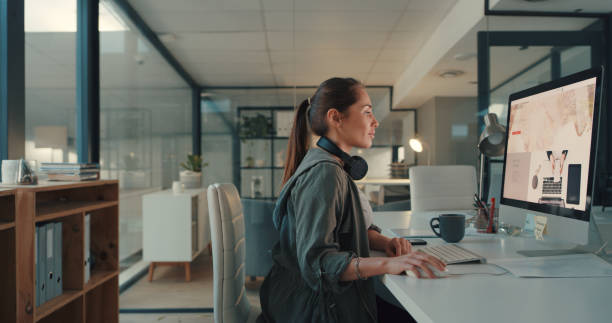
In today’s digital world, merely having a website is not enough; your website must provide an exceptional user experience (UX).
This is where the concept of #user_friendly_website_design gains importance.
A user-friendly site is one where visitors can easily navigate, find the information they need, and achieve their goals without getting confused or frustrated.
This not only affects #user_satisfaction but is also directly related to your #conversion_rate and #brand_credibility.
To understand deeper, we must know that the main goal of website design goes beyond visual aesthetics; its usability and effectiveness for the end-user take precedence.
The importance of this approach is such that today, successful businesses dedicate a significant portion of their investment to improving this aspect, knowing that a user-friendly website design can be the difference between success and failure in the competitive online market.
Therefore, it is essential for every online business to become familiar with the principles and techniques of this field and implement them in their website structure.
This article will cover all dimensions of this vital concept in an explanatory and educational manner to help you on your path to user-friendly website design.
Don’t have a corporate website yet and missing out on online opportunities? With professional corporate website design by Rasav,
✅ Double your business credibility
✅ Attract new customers
⚡ Free consultation for your corporate website!
Key Principles of User Experience on the Web

To achieve a user-friendly website design, understanding and applying the key principles of user experience (UX) is essential.
These principles form the backbone of any successful website and help designers create a site that is both appealing to the user and meets business objectives.
The first principle is Findability; users should be able to easily find what they are looking for.
This includes clear navigation, efficient search, and a logical information structure.
The second principle is simplicity and clarity.
The design should not be complex; every element should have a clear purpose and convey the message clearly.
Removing unnecessary elements and visual clutter helps increase user focus.
Consistency is another crucial principle; integrated use of colors, fonts, layouts, and interactive patterns throughout the website makes users feel more familiar and comfortable and predict how different elements will function.
This consistency reduces cognitive load and increases interaction speed.
Other important principles include Immediate Feedback; users should receive a response from the system after every action they take, so they know if their action was successful or not.
These principles serve as expert guidance to achieve a user-friendly website.
These principles not only help increase user satisfaction but ultimately lead to the improvement of key website performance indicators such as retention rate and conversion rate.
User Interface and its Role in User-Friendly Website Design
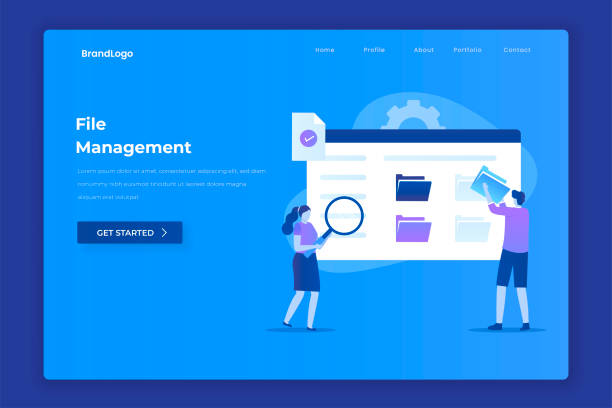
After discussing user experience, it’s time for the user interface (UI), which, alongside UX, is an integral part of user-friendly website design.
User interface refers to all visual and interactive elements that users see and touch when interacting with a website.
This includes buttons, icons, forms, typography, color palettes, and the overall page layout.
A good user interface is not only beautiful but also functionally efficient and intuitive.
Attractive visual design plays a significant role in initially attracting users and building trust.
However, this appeal must be accompanied by high #usability.
For example, buttons should be large enough and distinct to be easily clickable, and sufficient explanations for their functionality should be provided.
Forms should be simple and short, and feature appropriate input validation to prevent user errors.
Appropriate typography is also vital for content readability, and the size, font, and line spacing should be chosen in a way that doesn’t tire the user’s eyes.
The selection of the color palette should also be done carefully; colors should not only be aesthetically pleasing but also help reinforce visual hierarchy and highlight important information.
In this section, as specialized training, two important tables are provided for a better understanding of the differences and overlaps between UX and UI, as well as key UI elements, to help you improve your user-friendly website.
Table 1: Comparison of User Experience (UX) and User Interface (UI)
| Feature | User Experience (UX) | User Interface (UI) |
|---|---|---|
| Main Focus | Overall feeling and experience of the user with the product | Appearance and how the user interacts with visual elements |
| Ultimate Goal | Solving user problems, increasing satisfaction and effectiveness | Aesthetics, ease of use of elements |
| Key Question | Is it useful and enjoyable to use? | Is its appearance beautiful and interaction with it easy? |
| Examples | Information architecture, navigation, user research | Buttons, icons, forms, colors, fonts |
The Importance of Responsiveness and Loading Speed

In the current era, where users access the internet from various devices, #responsiveness and #loading_speed form the two main pillars of user-friendly website design.
A responsive (adaptive) website means that its layout and content automatically adjust to the screen size of the user’s device, whether it’s a desktop computer, tablet, or smartphone.
Ignoring responsive design means losing a large portion of potential audience, as a poor user experience on mobile devices can lead to quick user exits.
Page loading speed is equally critical.
Research has shown that users expect web pages to load in less than 2-3 seconds, and if there’s a longer delay, the likelihood of abandoning the site increases sharply.
This delay not only leads to losing visitors but also negatively impacts the site’s ranking in search engines.
Optimizing images, compressing codes (HTML, CSS, JavaScript), using a CDN (Content Delivery Network), and choosing appropriate hosting are among the specialized solutions for improving loading speed.
These two factors directly affect #user_satisfaction and, consequently, business success, and special attention should be paid to them in the early stages of user-friendly website design.
This section serves as a practical guide for web designers and business owners, emphasizing the importance of these technical factors in creating an excellent user experience.
Do you know that a weak corporate website takes away many opportunities from you daily? Solve this problem forever with professional corporate website design by Rasav!
✅ Create a powerful and reliable image for your brand
✅ Attract targeted new customers and increase sales
⚡ [Get free website design consultation]
Information Architecture and Intuitive Navigation
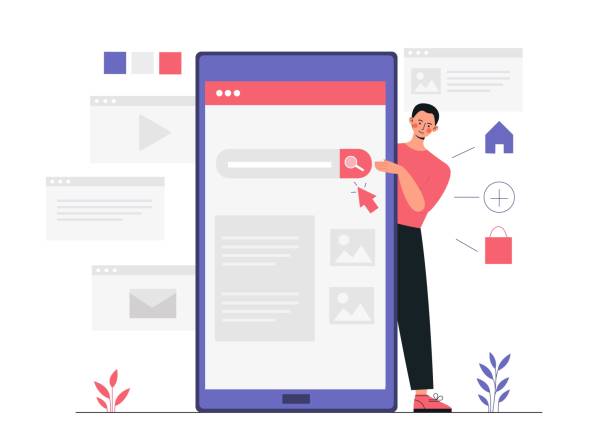
One of the fundamental pillars in building a user-friendly website design is efficient #information_architecture and intuitive navigation.
Information architecture refers to organizing and labeling website content in a way that users can easily find the information they need.
This process is similar to designing a building map; if the map is not logical and organized, users will have trouble finding their way.
Poor information architecture, even with excellent content, can lead to a frustrating user experience.
To create a strong information architecture, one must understand the needs and behaviors of the target users.
This includes logically grouping pages, using clear categories, and descriptive labels.
Intuitive navigation is also a direct result of good information architecture.
Navigation menus should be clear, predictable, and accessible.
Users should not have to think about how to go from one page to another.
Using common navigation patterns (such as a hamburger menu for mobile or main navigation at the top of the page for desktop) can help with this intuitiveness.
Additionally, adding breadcrumbs to pages helps users understand their location within the site’s structure and easily return to previous pages.
These aspects, serving as an explanatory and educational guide for user-friendly website design, ensure that users do not get lost and can quickly access their desired content, which in itself means increasing user satisfaction and increasing their time spent on the site.
Content, the Heart of User-Friendly Website Design
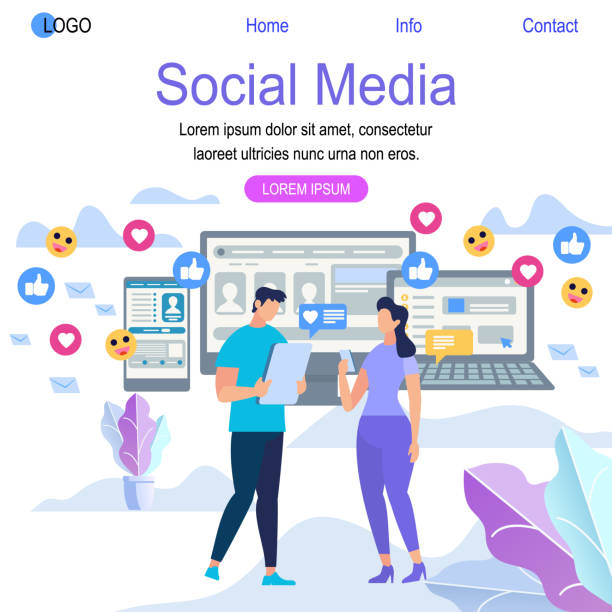
Content is like fuel for a website’s engine; even if the user-friendly website design is visually perfect and has easy navigation, without #engaging and #useful_content, it will not be of much value.
Content should address users’ needs and questions and be presented in a clear, comprehensive, and readable manner.
This doesn’t just mean text; it includes images, videos, infographics, and any other type of information presented to the user.
For content to be truly user-friendly, several points must be considered: Firstly, it must be written for the target audience.
The language and tone should match the brand’s personality and the audience’s expectations.
Secondly, #content_readability is very important.
Using short paragraphs, simple sentences, clear headings, bulleted lists, and bolding keywords helps users scan and understand information faster and easier.
Images and videos should be relevant and high-quality, and help explain concepts, rather than being added merely for aesthetics.
Also, the Call-to-Action should be clear and convincing, guiding the user towards the next action.
Strong guidance and explanatory content not only helps increase engagement but also makes users spend more time on your site and increases the likelihood of their return.
This approach ensures that your website provides an excellent experience not only technically but also informationally, and is recognized as a truly user-friendly website.
The Role of SEO in Increasing Usability

At first glance, #SEO and user-friendly website design might seem like two separate fields, but in reality, there’s a strong connection between them.
A search engine optimized website ultimately leads to an improved user experience and vice versa.
Google and other search engines are increasingly valuing user experience factors such as loading speed, responsiveness, bounce rate, and user dwell time on the site.
This means that a user-friendly site will naturally perform better in terms of SEO as well.
For instance, the #high_loading_speed mentioned earlier is not only desirable for users but also considered an important ranking factor by Google.
Furthermore, #simple_navigation and logical #information_architecture help search engine crawlers better understand your site’s structure and more effectively index your content, ultimately leading to an improved ranking in search results.
Quality and relevant content that meets user needs is not only user-friendly but also increases the likelihood of sharing and earning backlinks, which are important SEO factors.
This section, presented in an analytical and specialized manner, demonstrates how design, by considering SEO principles, can mutually help create a user-friendly website design that is also optimized for search engines.
For a better understanding, the table below compares common SEO and UX factors.
Table 2: Overlap of SEO and User Experience (UX)
| Factor | Impact on SEO | Impact on User Experience (UX) |
|---|---|---|
| Loading Speed | Key ranking factor; reduces bounce rate | Reduces user fatigue, increases satisfaction |
| Responsiveness (Mobile-Friendly) | Better ranking in mobile search; reduces bounce rate | Easy access from any device; seamless experience |
| Easy Navigation and Information Architecture | Helps Google crawlers index better; increases crawl depth | Easy information retrieval; reduces user confusion |
| Quality and Relevant Content | Ranking for keywords; increases dwell time | Valuable for the user; meets needs; user return |
| Security (HTTPS) | Ranking factor; increases trust | Protects user information; creates a sense of security |
Continuous Testing and Optimization

After implementing a user-friendly website design, the work is not over; rather, a continuous process of #testing and #optimization begins.
Websites are living entities that must constantly adapt to changing user needs and new technologies.
#Usability_Testing is one of the most effective methods for identifying weaknesses in design.
In this process, real users interact with your website, and you observe their behavior, thoughts, and problems.
These tests can include A/B testing, five-second tests, and Card Sorting tests.
The results of these tests provide valuable insights that can be used to improve the user interface and user experience.
Data analysis from tools like Google Analytics is also essential for understanding user behavior.
By observing bounce rates, user navigation paths, and popular pages, you can identify behavioral patterns and make data-driven decisions to improve the site.
For example, if you notice many users exiting from a specific page, that page might need content redesign or Call-to-Action improvement.
The continuous optimization process is a feedback loop where you apply changes, monitor results, and then apply further changes based on new data.
This analytical and educational approach ensures that your website consistently provides an optimal user experience and remains in the minds of the audience as a user-friendly website.
Did you know your company’s website is the first point of contact for 75% of potential customers?
Your website is the face of your brand. With **Rasav**’s corporate website design services, build an online presence that attracts customer trust.
✅ Create a professional and lasting image of your brand
✅ Attract targeted customers and increase online credibility
⚡ Get free consultation from **Rasav** experts!
Accessibility for All Users
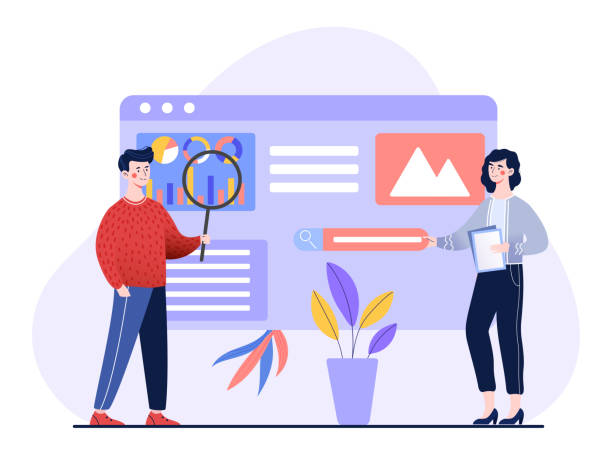
One of the most important yet often overlooked aspects of user-friendly website design is #accessibility.
Accessibility means ensuring that your website can be used by people with any #ability or #limitation.
This includes individuals with visual, auditory, motor, or cognitive disabilities.
Ignoring accessibility is not only ethically wrong but can also lead to losing a significant portion of the audience and even legal consequences.
Web Content Accessibility Guidelines (WCAG) provide international standards for designing accessible websites.
Adhering to these guidelines includes using alternative text (alt text) for images (for visually impaired users who use screen readers), ensuring sufficient color contrast for text and background (for low-vision users), enabling keyboard navigation without needing a mouse (for users with motor disabilities), and providing subtitles or transcripts for audio and video content (for hearing-impaired users).
Additionally, using semantic HTML code and a logical structure for web pages helps accessibility tools interpret content correctly.
Given that an increasing population of people with disabilities use the internet, attention to accessibility is crucial for every user-friendly website design.
This section, serving as a guide and explanation, helps you build an inclusive website that is user-friendly for everyone and excludes no user.
This investment in accessibility is not only ethical but also yields a significant return on investment as it includes a broad market of users.
The Importance of User Feedback in Continuous Improvement

One of the most valuable resources for ensuring your website truly has a user-friendly website design is to receive #direct_feedback from the users themselves.
No one can better identify its strengths and weaknesses than those who interact with your site every day.
Collecting and analyzing user feedback is a questioning content process that is nonetheless vital for continuous improvement.
There are various methods for collecting feedback, including online surveys, feedback forms, chatbots, and user interviews.
Each of these methods can provide different insights.
For example, surveys can provide quantitative data on overall satisfaction or common problems, while interviews and chats can provide deeper qualitative information about why users behave in certain ways.
The important point is to listen to the feedback, analyze it, and then act upon it.
Ignoring user feedback can lead to dissatisfaction, decreased engagement, and ultimately, loss of users.
Even negative feedback can be opportunities for improvement.
For instance, if users repeatedly mention difficulty in finding a specific section, this is a clear sign to revise the site’s information architecture or navigation.
Being proactive in collecting and responding to feedback demonstrates your commitment to creating an excellent user experience and makes users feel valued.
This section serves as specialized guidance for strengthening user relationships and continuously improving your user-friendly website.
Frequently Asked Questions
And other services of Rasav Advertising Agency in the field of advertising
Smart Google Ads: A new service for increasing website traffic through user experience customization.
Smart Marketing Automation: An effective tool for improving SEO rankings with the help of Google Ads management.
Smart Conversion Rate Optimization: A professional solution for analyzing customer behavior with a focus on optimizing key pages.
Smart Advertising Campaign: Designed for businesses seeking user engagement through user experience customization.
Smart Digital Advertising: A creative platform for improving digital branding with precise audience targeting.
And over a hundred other services in the field of internet advertising, advertising consultation, and organizational solutions
Internet Advertising | Advertising Strategy | Advertorial
Resources
Website Design Guide on Digikala Mag
Key Website Design Tips from Zoomit
The Importance of UI/UX in Website Design from Irancell Blog
The Impact of Websites on Business in Namnak
? Do you dream of a powerful presence in the digital world? Rasav Afarin Digital Marketing Agency, with its expertise and experience, offers comprehensive and effective solutions for the growth and development of your business. From personal and corporate website design to SEO and advertising campaign management, we pave your path to digital success.
📍 Tehran, Mirdamad Street, Next to Bank Markazi, Kazerun Jonubi Alley, Ramin Alley, No. 6
